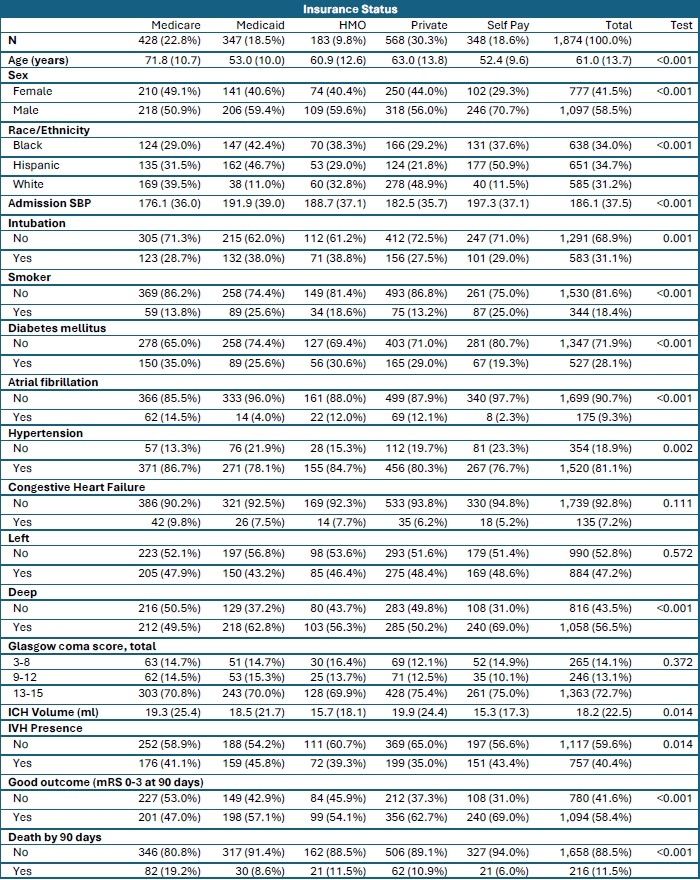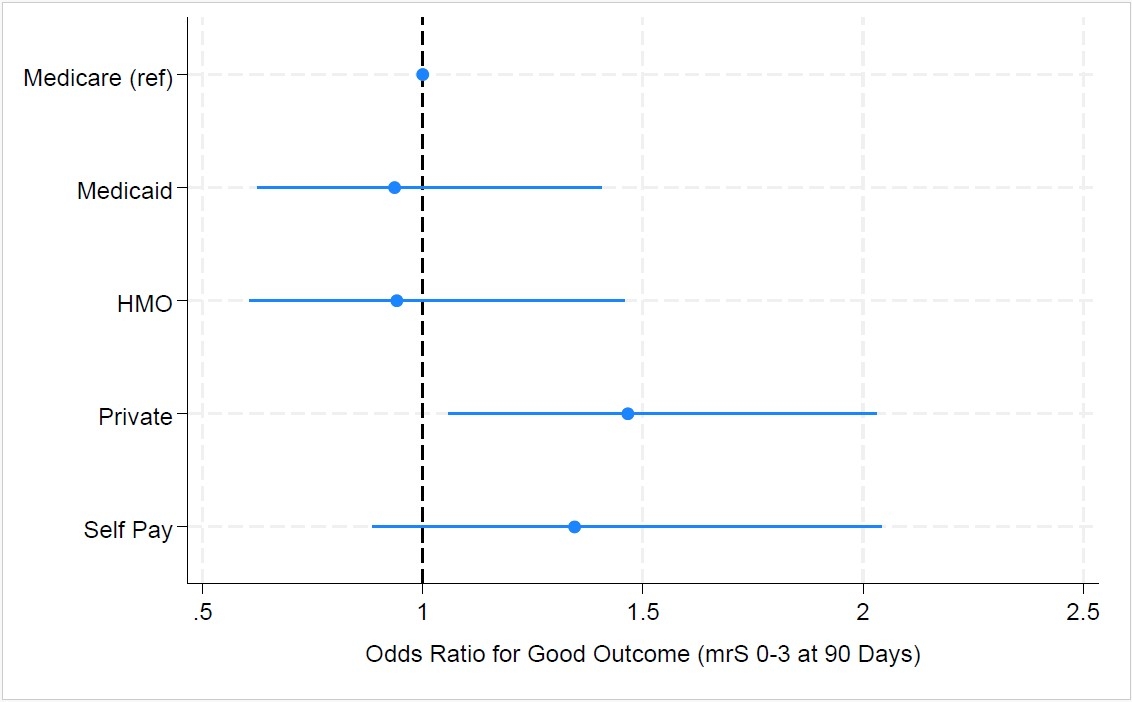Final ID: WP235
Insurance Status and Intracerebral Hemorrhage Outcomes: A Post-Hoc Analysis of the ERICH Study
Insurance status may serve as an indicator of social and financial barriers that impede access to quality care. Disparities in outcomes of patients with ischemic stroke have been associated with insurance coverage. However, there are few studies investigating the impact of insurance status on outcomes in patients with intracerebral hemorrhage (ICH).
Methods:
We performed a post-hoc analysis of the Ethnic/Racial Variations of Intracerebral Hemorrhage (ERICH) study to investigate the impact of insurance status on good functional outcome (modified Rankin Scale score of 0-3 at 90 days after ICH). A logistic regression model was adjusted for age, sex, race, mechanical ventilation, systolic blood pressure, smoking status, diabetes mellitus, atrial fibrillation, hypertension, congestive heart failure, Glasgow Coma Scale, ICH location (side and deep), ICH volume on CT, and presence of intraventricular hemorrhage. VA patients were excluded from analysis due to small sample size.
Results:
Among 1874 patients included in this study, 428 patients (22.8%) had Medicare, 347 patients (18.5%) had Medicaid, 183 patients (9.8%) had HMO, 568 patients (30.3%) had private insurance, and 348 patients (18.6%) were self-pay. Table 1 illustrates demographics by insurance status. The odds ratio for good outcome in those with private insurance was significantly higher in comparison to Medicare (OR 1.47, 95% CI 1.06-2.03, p=0.022, Figure 1). When comparing private insurance to all other insurance types, the odds ratio was 1.42 (95% CI 1.09-1.84, p=0.009).
Conclusion:
Amongst patients in the ERICH study, private insurance was associated with a higher likelihood of good outcome (mRS 0-3 at 90 days) in ICH patients compared to Medicare or other insurance status. Further study is needed to establish if this observation is causal or an epiphenomenon.
More abstracts on this topic:
Scott Kiersten, Kyriakopoulos Vasilia, Kim Gab Seok, Lee Juneyoung, Urayama Akihiko
A Phase 2 Study Evaluating the Effects of Mivelsiran, an Investigational RNA Interference Therapeutic, on Hemorrhagic and Nonhemorrhagic Manifestations of Cerebral Amyloid AngiopathyGreenberg Steven, Parikh Neal, Lee Jin-moo, Van Etten Ellis, Van Osch Matthias, Klijn Catharina, Sostelly Alexandre, Goteti Sasikiran, Sepehrband Farshid, Avbersek Andreja, Deering Robert
Readers' Comments
We encourage you to enter the discussion by posting your comments and questions below.
Presenters will be notified of your post so that they can respond as appropriate.
This discussion platform is provided to foster engagement, and simulate conversation and knowledge sharing.
You have to be authorized to post a comment. Please, Login or Signup.


